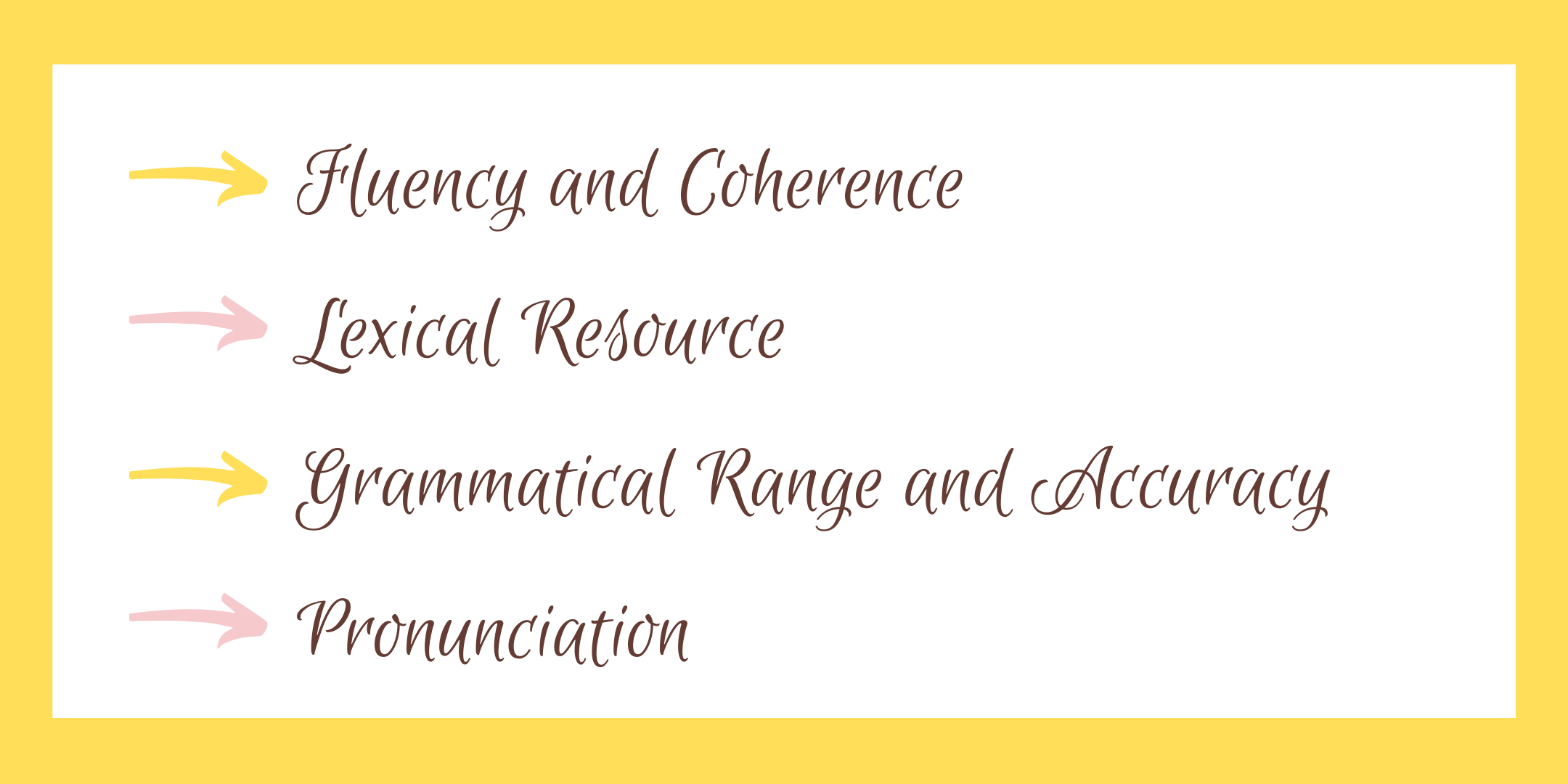How do examiners decide what score to give you?
They assess 4 areas:
Let’s go through the Descriptors:
Fluency and Coherence refer to the ability to speak smoothly, at an appropriate speed and without too many pauses and to the ability be logical and consistent. Check out the difference between BAND 6 | BAND 7 | BAND 8
BAND 6. The candidate is willing to speak at length, though may lose coherence at times due to occasional repetition, self-correction or hesitation. He/She uses a range of connectives and discourse markers but not always appropriately.
BAND 7. The candidate speaks at length without noticeable effort or loss of coherence and may demonstrate language-related hesitation at times, or some repetition and/or self-correction. He/She uses a range of connectives and discourse markers with some flexibility.
BAND 8. The candidate speaks fluently with only occasional repetition or self-correction; hesitation is usually content-related and only rarely to search for language develops topics coherently and appropriately
Lexical resources simply means “vocabulary”. This area assesses how flexible your range is. This means that the examiners will assess whether you use simple or more advanced words and whether you are able to use idiomatic expressions.
Check out the difference between BAND 6 | BAND 7 | BAND 8
BAND 6. The candidate has a wide enough vocabulary to discuss topics at length and make meaning clear in spite of inappropriacies. He/She generally paraphrases successfully.
BAND 7. The candidate uses vocabulary resource flexibly to discuss a variety of topics, uses some less common and idiomatic vocabulary and shows some awareness of style and collocation, with some inappropriate choices. He/She uses paraphrase effectively.
BAND 8. The candidate uses a wide vocabulary resource readily and flexibly to convey precise meaning, uses less common and idiomatic vocabulary skilfully, with occasional inaccuracies. He/She uses paraphrase effectively as required.
The Grammar area of the IELTS SPEAKING test assesses your ability to use more advanced structures and to avoid making grammar mistakes. So, for example, you should be able to use all tenses rather than just the present ones. Check out the difference between BAND 6 | BAND 7 | BAND 8
BAND 6 The candidate uses a mix of simple and complex structures, but with limited flexibility. He/She may make frequent mistakes with complex structures though these rarely cause comprehension problems.
BAND 7 The candidate uses a range of complex structures with some flexibility and frequently produces error-free sentences, though some grammatical mistakes persist.
BAND 8 The candidate uses a wide range of structures flexibly and produces a majority of error-free sentences with only very occasional inappropriacies or basic/non-systematic errors.
The Pronunciation area of the IELTS SPEAKING test assesses whether you can generally be understood, how you pronounce the single words, sentence stress, rhythm and intonation. Accent is not usually a problem unless the examiner cannot understand what you are saying.
Check out the difference between BAND 6 | BAND 7 | BAND 8
BAND 6 The candidate uses a range of pronunciation features with mixed control and shows some effective use of features but this is not sustained. He/She can generally be understood throughout, though mispronunciation of individual words or sounds reduces clarity at times.
BAND 7 The candidate shows all the positive features of Band 6 and some, but not all, of the positive features of Band 8.
BAND 8 The candidate uses a wide range of pronunciation features sustains flexible use of features, with only occasional lapses. The candiate is easy to understand throughout; L1 accent has minimal effect on intelligibility.






